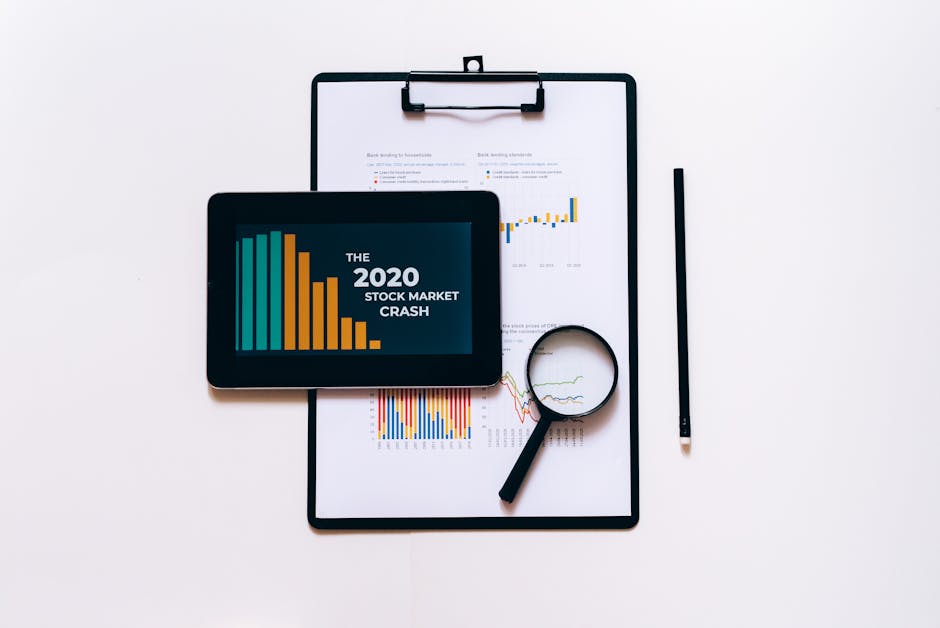The Role of Big Data in Modern Market Analysis

Big Data has transformed the way businesses analyze markets, offering unprecedented insights into consumer behavior, trends, and competitive landscapes. By analyzing vast amounts of data from multiple sources, companies can identify patterns that were previously invisible and make data-driven decisions with greater confidence. Whether it's optimizing marketing strategies, forecasting sales, or understanding customer preferences, Big Data plays a critical role in modern market analysis. As businesses increasingly rely on digital channels and technology-driven tools, the ability to harness and interpret large datasets has become a key differentiator in the marketplace.
The Evolution of Big Data in Market Analysis
The concept of using large datasets for business decision-making is not new, but the scale and scope of Big Data have grown exponentially over the past decade. Traditionally, market analysis relied on smaller datasets and often involved manual processes that were time-consuming and prone to errors. With the advent of Big Data technologies, companies can now process and analyze vast amounts of information in real-time.
One of the early adopters of Big Data in market analysis was the financial services industry. Banks and financial institutions began using large datasets to predict market movements, assess risks, and personalize customer experiences. This approach quickly spread to other industries as businesses recognized the potential benefits of data-driven insights.
Today, Big Data is an integral part of market analysis across various sectors, including retail, healthcare, manufacturing, and more. The ability to collect data from diverse sources—such as social media, online transactions, and IoT devices—has expanded the possibilities for market research and consumer insights.
Key Components of Big Data in Market Analysis
Big Data in market analysis involves several key components that work together to provide actionable insights:
- Data Collection: Gathering data from multiple sources such as social media platforms, customer feedback forms, purchase histories, website analytics, and third-party databases.
- Data Storage: Utilizing cloud-based storage solutions or on-premises data warehouses to store vast amounts of structured and unstructured data.
- Data Processing: Leveraging advanced algorithms and machine learning models to process raw data into meaningful insights.
- Data Analysis: Employing statistical tools and software like Hadoop or Apache Spark to analyze trends, correlations, and patterns within the data.
- Data Visualization: Presenting complex data in an easily understandable format through dashboards, graphs, and charts.
The Impact of Big Data on Marketing Strategies
The influence of Big Data on marketing strategies is profound. Businesses can now tailor their marketing efforts based on precise consumer profiles created from extensive data analysis. This shift from broad-based marketing to highly targeted campaigns has proven to be more effective in reaching potential customers.
For instance, predictive analytics—a subset of Big Data—enables marketers to anticipate future consumer behaviors based on historical data. Companies like Amazon use predictive analytics to recommend products based on past purchases and browsing history. This personalized approach not only improves customer satisfaction but also increases conversion rates.
Furthermore, real-time data analysis allows marketers to adjust their strategies on the fly. During major events like Black Friday or Cyber Monday, retailers can monitor sales data in real-time to optimize promotions or manage inventory levels accordingly. Such agility would be impossible without the insights provided by Big Data.
Challenges Associated with Big Data in Market Analysis
While Big Data offers numerous advantages for market analysis, it also presents several challenges that businesses must address. One significant issue is data privacy. With the increasing amount of personal information being collected and analyzed, companies must ensure they comply with regulations such as GDPR (General Data Protection Regulation) in Europe or CCPA (California Consumer Privacy Act) in the United States.
An additional challenge lies in the quality of the data being collected. Inaccurate or incomplete data can lead to misleading conclusions and poor decision-making. Therefore, businesses need robust mechanisms for verifying and cleaning their datasets before analysis.
Another concern is the sheer volume of data that companies must manage. Storing and processing terabytes or even petabytes of information requires substantial investments in infrastructure and technology. Companies also need skilled personnel who can interpret complex datasets effectively—a task that becomes increasingly difficult as the size and complexity of the data grow.
The Future of Big Data in Market Analysis
The role of Big Data in market analysis will continue to expand as technology advances further. Innovations such as artificial intelligence (AI) and machine learning are already enhancing the capabilities of Big Data tools by automating complex analytical processes and providing deeper insights into consumer behavior.
One emerging trend is the integration of AI-driven chatbots with Big Data analytics for customer engagement. These chatbots can analyze customer interactions in real-time and provide personalized recommendations or support based on individual preferences—a capability made possible through advanced data analytics.
Moreover, as 5G networks become more widespread globally, they will enable faster data transmission speeds which will facilitate more efficient real-time analytics—allowing businesses not only faster response times but also more accurate forecasting capabilities than ever before.
Real-World Applications: How Companies Are Using Big Data
Nike provides an excellent example of how companies are leveraging Big Data for market analysis. The sportswear giant uses detailed customer data collected via its apps like Nike Training Club & Nike Run Club along with social media engagement metrics among others—to understand better what consumers want from their products—and then tailor their offerings accordingly based on these insights.
This kind-of real-world application shows how crucial integrating comprehensive datasets into strategic planning has become—and why organizations across different industries are increasingly investing heavily into acquiring sophisticated analytic capabilities driven by cutting-edge technologies like those underpinning today’s most powerful big-data platforms & solutions available commercially.
The integration of Big Data into modern market analysis represents a significant shift in how companies approach understanding their consumers & competitors alike—by providing them access not just vast volumes but also actionable insights derived from those very same datasets—enabling them make better informed decisions around everything from product development through pricing strategy all way down distribution channel optimization (and beyond).
This trend looks set only accelerate further over coming years thanks ongoing advances areas like AI/ML & 5G connectivity making possible even greater levels sophistication within both collection processing stages respectively, ultimately driving increased competitiveness while simultaneously reducing costs associated traditional methods thus delivering tangible benefits bottom line too!
